Antarctica - Introduction
- bstclair579
- Mar 9
- 5 min read
Updated: Mar 10
It’s been a while since I have posted anything on our blog. Since the last time I posted, Sheri and I drove through southern Chile and Argentina on our way to Buenos Aires. After leaving Hank in Uruguay, we returned home for Christmas and enjoyed time with family, and took a nice road trip through the western United States and Canada to enjoy some skiing. But now I have a little time to write something about our incredible trip to the Antarctic peninsula.
It is difficult to put into words how extraordinary Antarctica is. It is special, unlike any other place in this big, beautiful world. It is a land of extremes. It is the highest, driest, coldest, windiest place on earth. The average elevation of Antarctica is about 2,300 m (7,500 ft). The icecap is up to 4.8 km thick. The weight of the icecap results in much of the land mass of the continent being below sea level. It is the driest continent in the world, receiving an average of 150 mm (6 in) precipitation per year. The coldest temperature on earth has been recorded in Antarctica at −89.2 °C (−128.6 °F). It is the windiest continent on earth with the highest recorded windspeed at 327 km/h (199 mph). Some places like Commonwealth Bay regularly experience winds of 150 mph.
Our ship, like most cruise ships to Antarctica, began the journey in South America (Ushuaia, Argentina) and headed for the Antarctic Pennisula. The Antarctic Pennisula is essentially an extension of the southern Andes where the ocean plate to the west collides with the Antarctic continental plate creating a subduction zone with associated uplift of the penninsula. It is the northernmost point of the landmass of the Antarctic continent. The crossing from the southern tip of South America to the Antarctic Pennisula involves the Drake Passage. It is known as the most treacherous waters in the world for ships. The Antarctic Circumpolar Current running from west to east creates a strong ocean current, which is amplified by being constricted between Cape Horn and the Antarctic Penninsula. Waves as high as 40 ft are common. Before our trip across the Drake Passage, Sheri and I listened to a book-on-tape called The Wager about a 1740 English expedition around Cape Horn with the objective to challenge the Spanish in the southern Pacific. Rounding Cape Horn was a disaster that led to a shipwreck and mutiny. The book certainly put the scare in us. But to our good fortune, the seas during our crossing were unusually calm both going to and coming from Antarctica.
The other really interesting thing about Antarctica is that it is probably the best example of cooperation among the world's nations. The Antarctic Treaty, signed in1959, is an agreement that prohibits military activities in Antarctica and promotes peaceful scientific research and collaboration among the signatories. The treaty, along with other agreements, sets standards for environmental protection including tourism. Mining and oil exploration is prohibited. And the treaty sets asides any territorial claims. The agreement applies to all lands south of 60° latitude. The original 12 signatories have since been joined by others for a total of 58 parties to the treaty. 55 nations have established research stations on the continent. The agreement is in effect until 2048 when nations can request revisions, but they must be agreed upon by three-quarters of the voting-member nations. We celebrated Antarctica Day, December 1, while on the ship, marking the date of the signing of the treaty.
The cruise line that we went with was Atlas Ocean Voyages. It is a fairly new company (established in 2019). The ship was the World Navigator. It is only three years old. The cruise line specializes in science-focused polar travel. The ship was fairly small with 143 passengers and about the same number of crew members. The ship was quite luxurious, much more so than what we are used to. I decided to go for a nicer ship since the price difference was not large. Being a newer ship, it was a much more environmentally friendly ship.
We booked the cruise about six weeks ahead of time, and from what I can tell, got a very good deal. We booked through an Argentine travel agency called Wayfinders. Wayfinders was great. They were very easy to work with, and very friendly and accommodating. When we arrived in Ushuaia, they greeted us warmly, loaned us some gloves and waterproof pants, gave us some nice swag, and even treated me to a great haircut at the salon next door. They also allowed us to park Hank in a secure location at a family member's property.
A highlight of the trip was the people working on the ship. They were amazing, all very friendly and helpful. I feel like we became good friends with many of the crew. Unfortunately, I did not write down their names and have forgotten many of the names. But we have not forgotten them, and are grateful for the kindness and sevice that they showed us. Another plus was the excellent food and drink onboard. Some of the people of note include our steward from Indonesia (who made sure our room was clean every day), the guy from Colombia at the front desk and in the shop, the bartenders from Honduras and Peru, the cruise director, Michael from the United States, the musician, Fatima from the Czech Republic and Spain, our waiter from the Philippines, and many others. And I cannot fail to mention the ship captain, Agusto Neto from Portugal, and the expedition leader, Jonathan Zaccaria from France. They did an amazing job of finding incredible places to visit and getting us there, including places they did not think that we would be able to reach (more on that in later posts).
The expedition guides were outstanding. They came from a variety of backgrounds and countries. Their passion for Antarctica was infectious. They had great knowledge of all that surrounded us, including the fauna, flora (which is not much), geology, glaciology , oceanography, and history. Their lectures were good, and their guiding was excellent. We always felt safe and they took good care to make sure we did not disturb the animals or cause any environmental harm. We usually had two outings per day. We were divided into four groups. If we were able to do a landing, one group would go on land while the second group did a tour in the Zodiacs. The other two groups would wait onboard until the first two groups returned, then it was their turn. This ensured that there were never more than fifty people on land. What was really fun was their enthusiasm and joy to be in such a beautiful, magnificent place, almost as if it was their first visit. Many times they seemed as excited as the clients to be going to the places that we did. We felt that we became close to many of the guides, including Fen, Martin, Susie, Nacho, Janel, Louise, and Susy. (We visited Susy and her husband, Marty, in Colorado on our skiing road trip in January.)
The other passengers onboard the ship were great. They were friendly and not at all pretentious. To many it was a trip of a lifetime, just like us. They were from around the world, although I would say that most were from the United States or Canada. We thoroughly enjoyed visiting with others and hanging out with them on our excursions, at lectures, at meals, and in the lounge in the evening.
The next four posts are pictures from our cruise along the Antarctic Pennisula and back across the Drake Passage. Some of the pictures are from the expedition team onboard the World Navigator, especially from Nacho, the ship photographer. (He gave an excellent presentation on how to take good pictures). Atlas Ocean Voyages was very kind and generous in sharing their pictures from the cruise.
I may have included too many pictures in the next few posts. Anyone looking at the posts are welcome to skip through them. I especially apologize for all the pictures of penguins - they are just too darn cute!

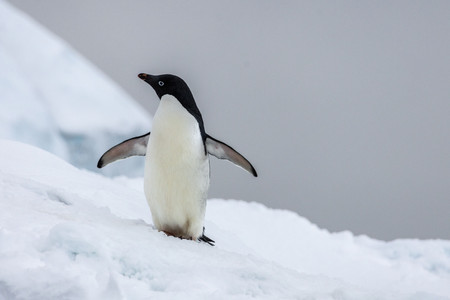



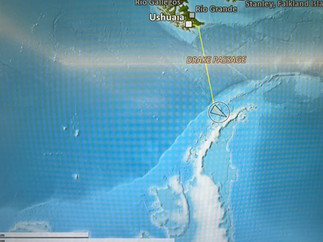

















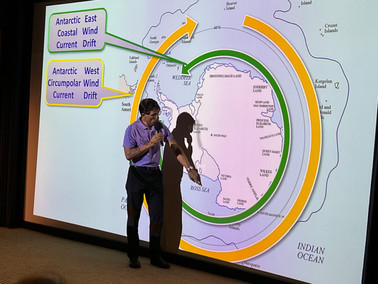







































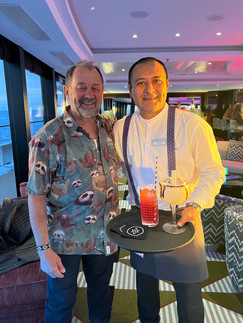











































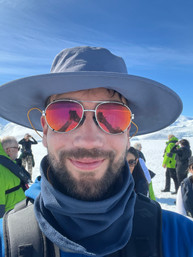































コメント